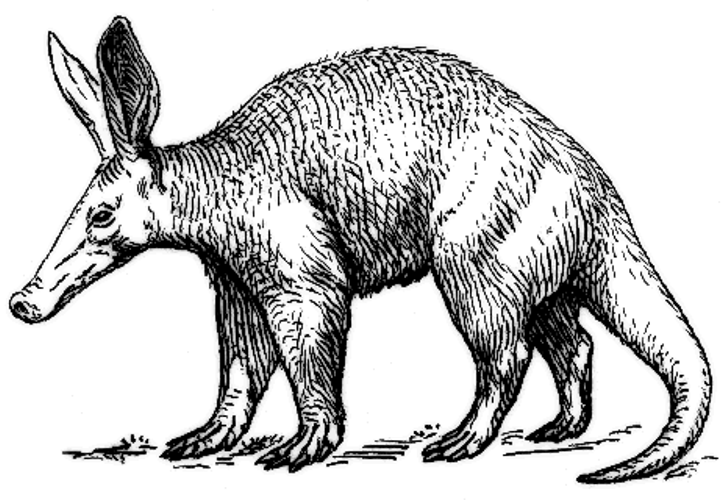History of... Aardvark
Name:
Aardvark
Scientific Name:
Orycteropus afer
Family:
Orycteropodidae
Conservation Status:
Least Concern
Habitation:
savannas, grasslands, woodlands and bushland
Global Location:
Sub-Saharan Africa
Discovery:
5 million years ago
The aardvark is a medium sized, burrowing, nocturnal mammal native to Africa. The aardvark is found over much of the southern two-thirds of the African continent, avoiding areas that are mainly rocky. It lives on ants and termites, which it digs out using its sharp claws and powerful legs. It also digs to create burrows in which to live and rear its young.
The name aardvark is Afrikaans for earth pig or ground pig because of its burrowing habits.
Even though they are not closely related to pigs, the aardvark is vaguely pig-like in appearance. Its body is stout with a prominently arched back and is sparsely covered with coarse hairs. The rear legs are longer than the forelegs. The front feet only have four toes, while the rear feet have all five toes. Each toe bears a large nail which is shovel-like.
An aardvark weighs between 60 and 80 kilograms (130–180 lb), and is between 105 and 130 centimetres (3.44–4.27 ft) long and can reach lengths of 2.2 metres (7 ft 3 in) when its tail is taken into account. It is 60 centimetres (24 in) tall at the shoulder, and has a girth of about 100 centimetres (3.3 ft).
The aardvark is pale yellowish grey in colour and often stained reddish-brown by soil. The aardvark's coat is thin, and its primary protection is its tough skin. The hair surrounding its nostrils is dense to help filter out matter as it digs. Its tail is very thick at the base and gradually tapers.
Aardvarks pair only during the breeding season. With a gestation period of seven months, one cub weighing 1.7–1.9 kilograms (3.7–4.2 lb) is born during May/July. After two weeks it is able to leave the burrow to accompany its mother, and eats termites at 9 weeks. The young are weaned at around three months. At six months it is able to dig its own burrows, but it will often remain with the mother until the next mating season. A young Aardvark matures at two years.
At night they tend to be more active during the first portion of night (roughly between 8:00 p.m. and 12:00 a.m.). During adverse weather or if disturbed they will retreat to their burrow systems. They cover between 2 and 5 kilometres (1.2 and 3.1 miles) in a night. However, some studies have shown that they may travel as far as 30 kilometres (19 miles) in a night.
Aardvarks live for up to 23 years in captivity. The aardvark is known to be a good swimmer and has been spotted successfully swimming in strong currents.


